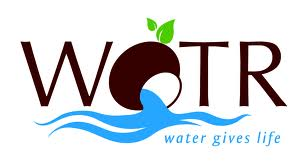/topics/climate-and-weather
Climate and Weather
Moving from paddy and sugarcane to less water-intensive crops such as oilseeds, pulses and millets can help resolve the Cauvery water dispute
Posted on 14 Jan, 2013 12:10 AMWhat happens when two or more states are dependent on same water resource for agricultural purposes ? Do the states compete for the resource or are their needs sufficiently different from each other? What are the consequences of the competition for this precious resource?
This article sheds light on the dispute between Karnataka and Tamil Nadu, for sharing Cauvery river water. The ongoing tussle between the two states has seen a lot of unrest amongst farmers in form of dharnas, protests, rail roko and non-cooperation by citizens, and disagreement with the agreements made by their respective governments and unending negotiations by governments involved, to come to a mutually agreeable decision.
District-wise data on groundwater resources and its utilization in Andhra Pradesh for the year 2007-08 - A compilation by the Andhra Pradesh State Groundwater Department and the Central Groundwater Board
Posted on 13 Jan, 2013 10:53 PMThe data is categorised into watershed wise (basin-wise) annual availability of groundwater, current draft (utilisation), allocation for domestic and industrial needs, availability for future use (or the balance) and categorisation based on stage of development and rigorous statistical treatment of water levels.
Drought mitigation measures through climate adaptation for securing agricultural livelihoods in Uttar Pradesh
Posted on 13 Jan, 2013 02:43 PMProlonged and recurrent drought, being experienced in India and various parts of south Asia, is the manifestation of climate change, partly caused by human interventions. Drought has been one of the primary reasons for widespread poverty and environmental degradation including deteriorating water quality and water security. The world has been more drought-prone during the past 25 years and the vulnerability of tropical countries to drought is likely to increase (Inter-governmental Panel on Climate Change, 2007).
Studying climate change in India- A book review in Economic and Political Weekly
Posted on 12 Jan, 2013 10:44 PMThis article in Economic and Political Weekly is a review of the edited book Handbook of Climate Change and India: Development, Politics and Governance by Navroz Dubash. The author of the article states that the book is an important addition to the body of knowledge on the subject of climate change. The articles in the book are written from diverse view points by authors who are activists, researchers, diplomats, policymakers, and politicians.
Mobiles come to the aid of farmers in Maharashtra, and help give locale-specific agro-advisories
Posted on 12 Jan, 2013 03:56 PM
Greening rural development in India - A report that reviews and recommends steps on goverment implemented green schemes
Posted on 11 Jan, 2013 07:49 PMRecognizing the national and global imperatives for regenerating natural resources and conserving ecosystems, the Ministry of Rural Development requested UNDP to examine the environmental implications of its schemes and assess the potential of these schemes to deliver green results.
Traditional diversion-based phad irrigation systems help mitigate risk of crop failure in the drought-prone farmer suicide belt of Vidarbha, Maharashtra
Posted on 11 Jan, 2013 11:56 AMMany of these systems (1) continue to function and are often more sustainable, cost-effective and successfully managed by local institutions. Phads are one such community-based and managed diversion irrigation management system (2) prevailing in the north-western part of Maharashtra and date back to the early 16th century as per historical accounts. The system is prevalent in the Tapi basin on rivers the Panjhra, Mosam and Aram in Dhule and Nashik districts (3).
Phads or diversion-based irrigation systems, are being revived and promoted in Vidarbha region of Maharashtra by Dilasa, a Yavatmal-based voluntary development organisation (Video courtesy: Dilasa)
Increasing rice yields and saving water: Lessons for policy and practice: Bi monthly update from SRI-India Network for November - December 2012
Posted on 11 Jan, 2013 07:50 AMIncreasing rice yields and saving water: Lessons for policy and practice - The System of Rice Intensification (SRI)
LEISA magazine special issues in Hindi, Tamil and Telugu - A compilation of selected articles on combating desertification
Posted on 10 Jan, 2013 12:08 PMLow external input and sustainable agriculture (LEISA) India has come up with a collection of alternative ways of combating desertification in the fragile region of the country in its recent issue. The articles are success stories of such intiatives by farmers and NGOs.






